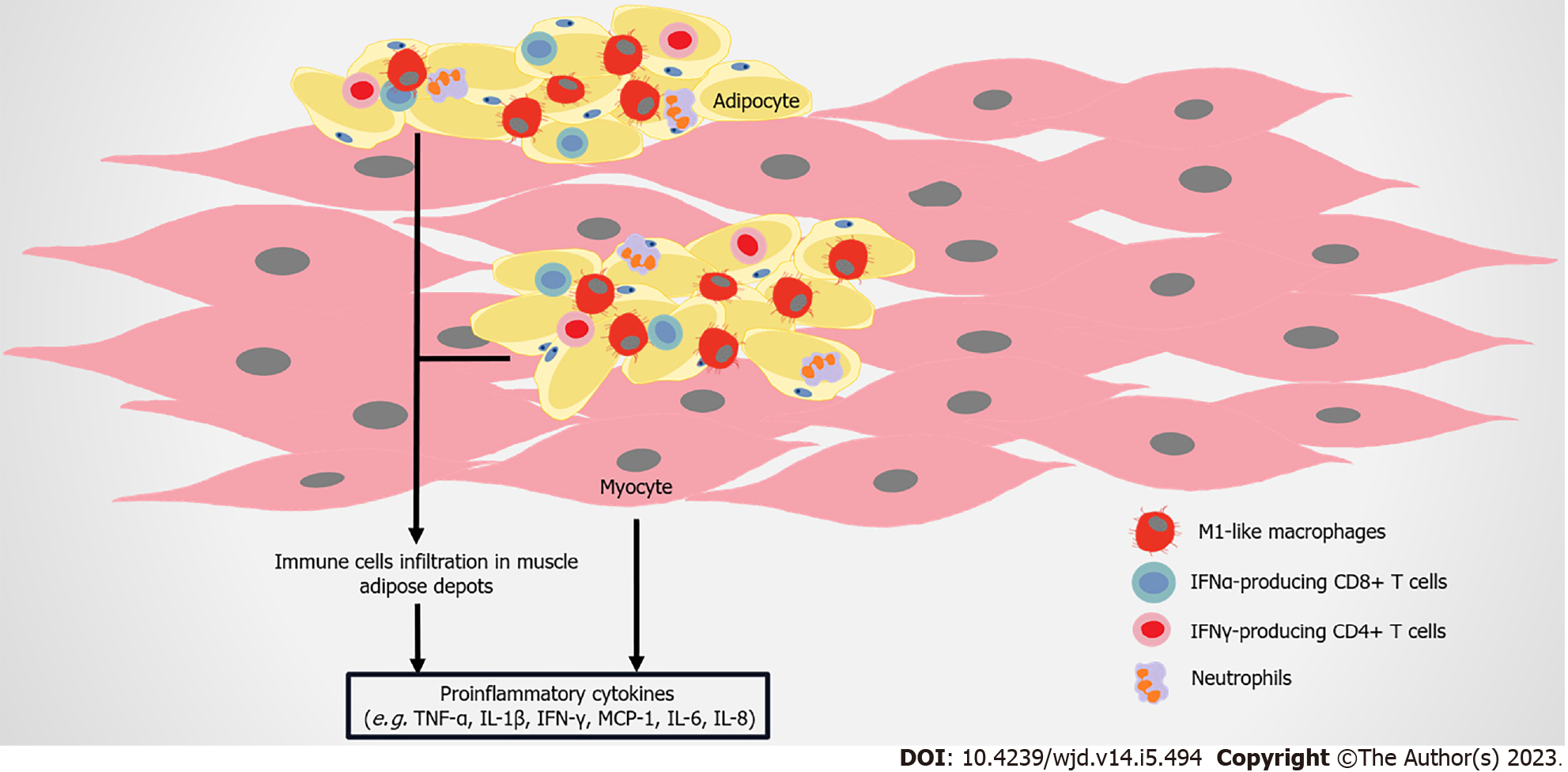Copyright
©The Author(s) 2023.
World J Diabetes. May 15, 2023; 14(5): 494-511
Published online May 15, 2023. doi: 10.4239/wjd.v14.i5.494
Published online May 15, 2023. doi: 10.4239/wjd.v14.i5.494
Figure 5 Immune attack and inflammation in the skeletal muscle in obesity-related type 2 diabetes.
As obesity develops, adipose depots between skeletal muscles or surrounding muscles continuously further expand. Immune cells including M1-like macrophages, CD8+ T cells and interferon-gamma (IFN-γ)–producing CD4+ cells, infiltrate into adipose depots in skeletal muscles. Skeletal muscle cells can also produce monocyte chemoattractant protein-1 (MCP1), interleukin-6 (IL-6), IL-8, tumor necrosis factor-alpha (TNF-α), and other molecules, and lead to the infiltration of macrophages, finally inducing insulin resistance.
- Citation: Wang HW, Tang J, Sun L, Li Z, Deng M, Dai Z. Mechanism of immune attack in the progression of obesity-related type 2 diabetes. World J Diabetes 2023; 14(5): 494-511
- URL: https://www.wjgnet.com/1948-9358/full/v14/i5/494.htm
- DOI: https://dx.doi.org/10.4239/wjd.v14.i5.494









